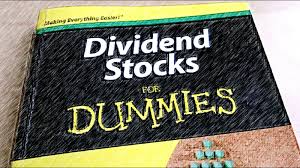Traditional dividend analysis typically focuses on larger stocks due to
their perceived safety (i.e. more financial resources and lower chance
of going bust) and steers clear of small caps for the opposite reasons.
On the contrary, there are plenty of smaller firms with good competitive
positions, solid balance sheets, impressive management teams, and a
distinguished dividend track record that I would consider just as steady
as blue chip firms. Moreover, they may be more nimble in reacting to
rapidly-changing markets compared with large caps, which tend to alter
their course with the agility of an ocean liner.
A classic example of a quality small-cap is Hong Leong Industries, which
has maintained a steady dividend payout of 50% (including periodic
special dividends) and has traditionally kept a clean, debt-free balance
sheet. Further, as of this writing, descendants of the founder continue
to own over 75% of the company, which I believe gives the company a
relatively rare ability in the public markets to think longer-term and
suffer through short-term hiccups.
The small cap universe is much broader than the well picked-over large
cap space. Certain small caps may also have longer growth runways than
their larger peers. As such, they shouldn’t be overlooked.
When evaluating small cap dividend-paying stocks, I look for the following attributes:
- Low debt or preferably no debt. Diversified, larger firms can get away with having more financial leverage and can typically get better rates on their borrowings, whereas smaller companies tend to be more cyclical or more reliant on one product line, so a rock-solid balance sheet is a must-have for a smaller company that pays a dividend.
- An invested leadership team. With small caps, I like to see insiders own at least 5% of the company. Having some skin in the game should motivate management to allocate capital with a long-term ownership perspective in mind.
- Steady free cash flow generation. This is always necessary when evaluating dividend-paying stocks as dividends must ultimately be funded by free cash flow in order to be sustainable. It’s a particularly good sign when a small company is able to generate free cash flow across the business cycle.
- Dominant in a profitable market niche. Small companies with dominant shares of niche markets may be less likely to attract the attention of large competitors. That’s because the niche could be too small to make a difference for the large competitors. If the niche is attractive enough, the larger companies are more likely to simply acquire the dominant player instead of entering the market themselves.
- Operates in a decidedly boring industry. I like to see a small company operating in an industry that’s unlikely to attract investor attention – e.g. industrial parts, safety equipment, and food processing equipment. The longer the business can fly under investors’ radars and not be of interest to potential competitors, the better.
- A payout ratio below 50%. Small companies with a long growth runway should be reinvesting at least half their cash back into the business to fuel long-term dividend growth. A firm that is paying out much more than 50% of its earnings is likely in the mature or declining stage of its lifecycle.
Researching smaller cap dividend-paying stocks requires a bit more
legwork than researching large caps where information and analysis is
more plentiful. If you’re looking for firms with strong capital return
potential, however, it can be a good place for dividend-minded
individual investors to spend their researching time.
HLIND (3301) - Hong Leong Industries - A dividend gem
http://klse.i3investor.com/servlets/cube/piggybank.jsp

